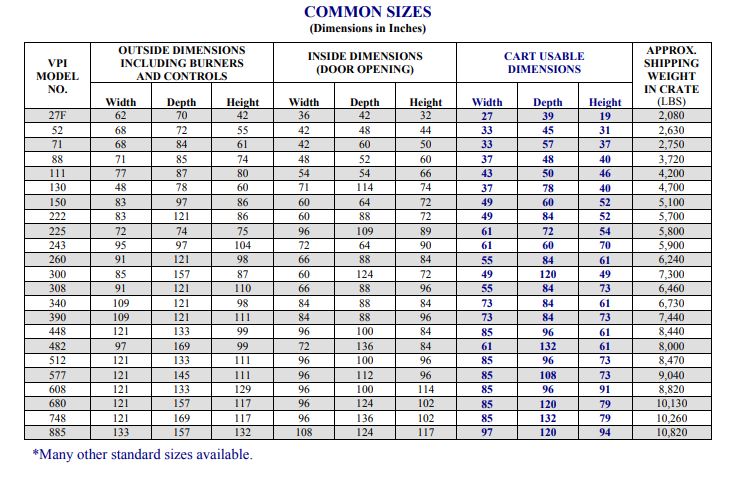Electric Motor Burn Off Ovens & Furnaces
Pollution Control Burn-Off Ovens, also known as burn out ovens, have had a dramatic impact on the Electric Motor Rewinding Industry. First introduced in 1971, Pollution Control’s Industrial Cleaning Ovens (also referred to as “burn-out” or “burn-off” ovens) dramatically increased production capacity, reduced labor costs, and eliminated harmful production and processing procedures.
Why Use A Burn-Off Oven for Electric Motor Rebuilding?
Electric motors are ubiquitous in American life powering most of the technological conveniences we depend on:
- Household appliances
- Air conditioners
- Vacuum cleaners
- Power tools
- Fans
- Pumps
- Disc drives
Electric motors are also the true workhorses of our industrial might. The largest electric motors are used to power diesel train engines, ship propulsion, pipeline compression, and pumped storage applications with ratings reaching 100 megawatts. Manufacturing operations use electric motors to power compressors, pumps, conveyors, punch presses, industrial blowers, refrigeration equipment, pellet mills, etc. Extending the operating life of these expensive motors can save manufacturers tens, even hundreds, of thousands of dollars. Some of these motors are irreplaceable having been manufactured decades before electric motor manufacturers standardized sizes and components.
To rebuild an electric motor, it must first be cleaned thoroughly: its copper wire coil and all varnish, epoxy, paint, and insulation removed. Prior to today's stringent environmental laws, this was often done by soaking the motor parts in kerosene and "burning off" or “burning out” the organic material in a pit or metal container. Removing the material by hand is slow, expensive, and often damaging to parts and physically unsafe for workers.

Burn-Off Oven Solutions
Pollution Control Products Co. developed its first fully contained "pyrolysis" cleaning oven for the Electric Motor Rewinding Industry in 1971. Not only did it solve safety and environmental issues, but it also helped companies dramatically increase production capacity and reduce labor costs. Pollution Control’s patented Controlled Pyrolysis® process easily removes insulation, varnish, epoxy, paint, and other organic material by pyrolysis - the thermal decomposition of organic materials.
Controlled Pyrolysis Burn Off Oven Features:
- Automatic controls regulated by the temperature of the stator core safely and economically strips stators and parts without any damage to aluminum or “T” frames.
- Smoke and gases driven off during pyrolysis are consumed by a 1400º afterburner leaving only small amounts of water vapor and carbon dioxide to exit the stack.
- Stators come out clean and ready for rewinding with a minimum of preparation.
- This unique process allows for the rebuilding of any size stator with any insulation system, including Random-Wound or Formed Coils, Vacuum Pressure Impregnated, Pour-On, ThickCast or Dip and Bake.
- Controlled Pyrolysis® ovens eliminate open burning, acids, strippers and solvents, and the dangerous handling and disposal of spent stripping materials.
- Cost savings usually will pay for the cleaning furnace in a short time and continue to pay dividends year after year.
- Pollution Control Controlled Pyrolysis® burn off ovens have been weld-tested and proven by Electric Motor Rebuilders in thousands of installations around the world.
ELECTRIC MOTOR REBUILDING PDF RESOURCES
Benefits of our Electric Motor Rebuilding Services
| Extends Electric Motor Life | Safely removes varnish, insulation, epoxy and other combustibles from stators, end bells, transformers and other metal parts |
| Safe and Easy to Operate | Stators come out of the oven with the old wire coil practically falling out |
| No More Chemical Stripping | Controlled Pyrolysis® eliminates the use of dangerous chemicals and abrasives and the high cost of their disposal |

